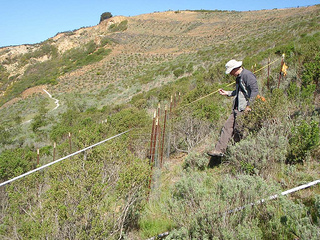 Conservation planning involves the development of measures to guide long-term management of species and their habitats within the constraints posed by different types of land and resource use. The goals of a conservation planning document may include:
Conservation planning involves the development of measures to guide long-term management of species and their habitats within the constraints posed by different types of land and resource use. The goals of a conservation planning document may include:
For a plan to succeed, the regional interplay of ecological, physical, and human factors must be well understood. In addition, the needs and concerns of multiple stakeholders must be balanced and addressed in a collaborative manner that achieves maximum benefits. H. T. Harvey & Associates’ senior team leaders guide planning efforts by articulating challenges and opportunities, connecting the efforts and ideas of various stakeholders, and grounding proposed solutions in sound science. Working from this foundation, our in-house technical experts, including restoration planners and biologists, wildland managers, wetland and plant ecologists, permitting specialists, wildlife and fisheries ecologists, taxonomists, and landscape architects, seamlessly prepare effective management planning documents and assist in their implementation.
Our recent conservation planning efforts have included:
Conservation planning is intricately tied to the requirements and goals of regulatory agencies and environmental laws and policies. For example, HCPs and NCCPs often address regional sets of impacts on various biological resources. Developing these plans may involve:
H. T. Harvey & Associates has prepared thousands of compliance documents, technical studies, permit applications, and mitigation and monitoring plans, and we can expertly navigate the required consultation and planning processes.
More information about our land management services can be found here.
Add your email to our mailing list to receive occasional ecological news from us.
Submit Your Details
